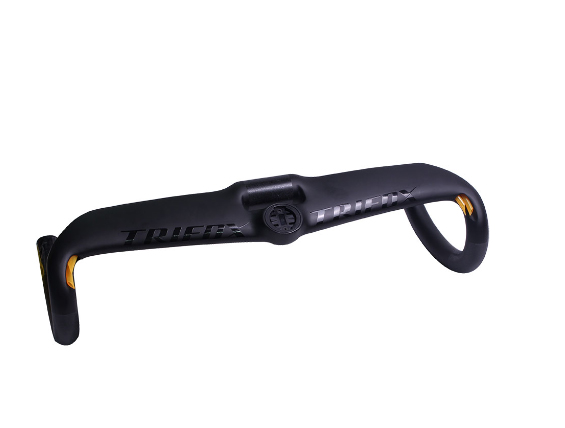
If you're looking to maximize your speed and efficiency on the road, installing aero bars on your bike is a great solution. Aero bars can significantly reduce wind resistance, allowing you to achieve faster speeds with less effort. Here's a step-by-step guide to installing road bike aero bars, using the Trifox Aero Aerofoil Section Carbon Drop Handlebar TC20AF. 1. Gather Your Tools and Materials Before you begin, ensure you have all necessary tools and materials: Aero bars (like the Trifox TC20AF) Hex keys Torque wrench Handlebar tape Scissors or a knife 2. Prepare Your Handlebar First, remove any existing handlebar tape from your current handlebars. This will give you a clean surface to work with and prevent any obstruction during installation. Make sure to clean the handlebar thoroughly to remove any residue or debris. 3. Position the Aero Bars Next, place the aero bars on the handlebar in the desired position. Typically, they should be placed centrally on the top section of the handlebar. Ensure they are symmetrical and aligned correctly. Adjust the angle to a comfortable position that allows you to maintain an aerodynamic posture. 4. Secure the Aero Bars Using the hex keys, tighten the bolts to secure the aero bars in place. It's crucial to follow the manufacturer's torque specifications to avoid over-tightening, which can damage the carbon handlebar. If you don't have the specifics, generally, a torque setting of 5-6 Nm is recommended for carbon components. 5. Adjust the Armrests and Extensions Most aero bars come with adjustable armrests and extensions. Set the armrests at a width and height that provides comfort and support for your forearms. Adjust the extensions so that your hands can reach the shifters and brakes comfortably while maintaining an aerodynamic position. 6. Rewrap the Handlebar Tape Once the aero bars are securely installed and adjusted, rewrap the handlebar tape. Start from the ends of the handlebar and work your way up, ensuring the tape is tight and evenly wrapped. Cut off any excess tape and secure the ends with finishing tape. 7. Test Ride and Final Adjustments Take your bike for a test ride to ensure everything feels comfortable and secure. Pay attention to how the aero bars handle and make any minor adjustments as needed. It may take a few rides to fine-tune the setup for maximum comfort and efficiency. Installing aero bars, such as the Trifox Aero Aerofoil Section Carbon Drop Handlebar TC20AF, can greatly enhance your cycling performance by reducing aerodynamic drag. Follow these steps to achieve a secure and comfortable installation, and enjoy the benefits of improved speed and efficiency on your next ride.
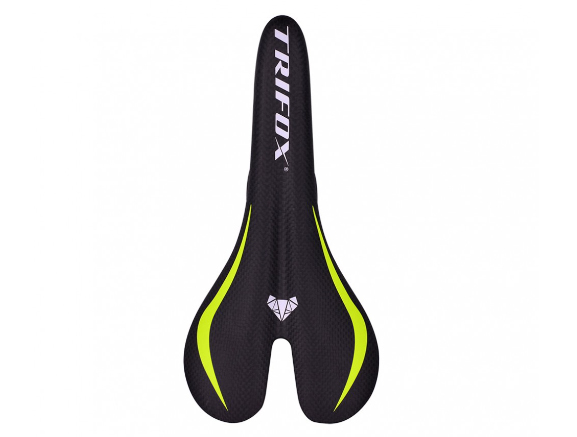
Choosing the right bike saddle can make a world of difference in your cycling experience, influencing both comfort and efficiency. Whether you're a casual rider or a seasoned cyclist, the right saddle can prevent discomfort and improve your performance. Here's a guide to help you select the perfect saddle, like the Trifox Carbon Bike Saddle, for your needs. 1. Understand Your Riding Style Your riding style plays a crucial role in determining the best saddle for you: Recreational Cycling: If you ride casually, prioritize a saddle with more padding and a wider shape. Road Cycling: Competitive riders should look for a lightweight, narrow saddle that allows for more aggressive positioning. Mountain Biking: A durable saddle with adequate padding and shock absorption is essential for rough terrains. 2. Consider Saddle Shape and Width The shape and width of the saddle are vital for comfort: Shape: Flat saddles are ideal for flexible riders who shift positions frequently, while contoured saddles suit riders who maintain a consistent position. Width: The saddle should support your sit bones without causing pressure on soft tissues. Measure your sit bone width and choose a saddle that accommodates it. 3. Look at the Padding Different types of padding suit various riding styles: Minimal Padding: Lightweight saddles with minimal padding, like the Trifox Carbon Bike Saddle, are perfect for road cyclists who prioritize speed and efficiency. Gel Padding: Provides extra comfort for long rides but may add weight. Foam Padding: Offers a good balance between comfort and support for most riders. 4. Material Matters Saddle materials affect durability and comfort: Leather: Molds to your shape over time, offering personalized comfort but requires maintenance. Synthetic: Durable and weather-resistant, suitable for most conditions. Carbon: Ultra-light and stiff, ideal for competitive cyclists looking to save weight and increase performance, as seen in the Trifox Carbon Bike Saddle. 5. Test Before You Buy Whenever possible, test different saddles before making a purchase. Many bike shops offer demo saddles you can try for a few days. Pay attention to how your body feels during and after rides. 6. Check for Adjustability Ensure that the saddle you choose has adjustable rails for easy fine-tuning. Proper saddle positioning can significantly enhance your comfort and efficiency. Conclusion Choosing the best bike saddle involves understanding your riding style, considering the shape and width, evaluating the padding and materials, and testing different options. The Trifox Carbon Bike Saddle is an excellent choice for those seeking a lightweight, efficient, and comfortable saddle for various cycling needs. Invest in the right saddle today and transform your riding experience!
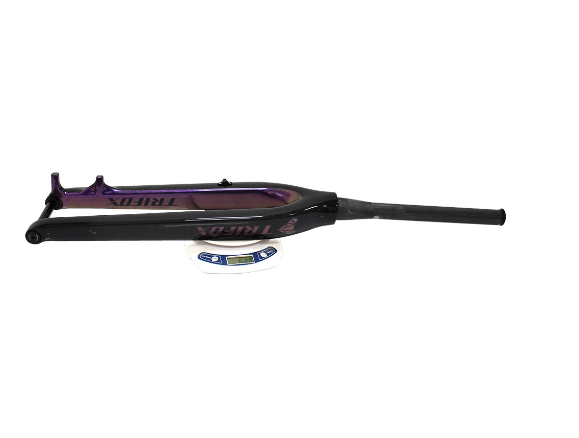
Adjusting your bike's boost fork can significantly enhance your riding experience, providing better handling and performance on various terrains. A boost fork, like the Trifox 29er Disc Brake Tapered Carbon MTB Rigid Fork Boost TA TMK200, is designed to offer increased stiffness and improved wheel support for more precise control. Here’s a step-by-step guide to adjusting your boost fork for optimal performance. 1. Understanding Boost Forks A boost fork features wider hub spacing (typically 110mm) compared to standard forks, allowing for better wheel stability and more robust performance, especially on rough terrain. This design enhances the bike’s overall performance by increasing the contact area between the tire and the ground, offering superior traction and control. 2. Gather Your Tools Before you begin, ensure you have the necessary tools: a torque wrench, Allen keys, and a shock pump if you're dealing with an adjustable air fork. For the Trifox rigid fork, you’ll mainly need Allen keys and the appropriate torque settings. 3. Remove the Front Wheel Start by loosening the axle nuts or quick-release lever to remove the front wheel. This gives you clear access to the fork and ensures you can make precise adjustments without the wheel in place. 4. Adjusting the Fork Alignment Ensuring your boost fork is properly aligned is crucial for optimal performance. Place the fork in the correct position on the bike frame and use the Allen keys to tighten the bolts evenly. Avoid over-tightening and ensure everything is securely fastened according to the manufacturer’s specifications. 5. Setting the Correct Torque Using a torque wrench, tighten the bolts to the specified torque setting provided by the manufacturer. Over-tightening can damage the fork or frame, while under-tightening can lead to instability. Refer to the user manual of the Trifox fork for precise torque values. 6. Fine-Tuning Suspension Settings (if applicable) If your boost fork includes suspension settings, such as preload, compression, or rebound adjustments, refer to the manufacturer’s guidelines for setting these to match your riding style and weight. The Trifox rigid fork does not include these settings, making it simpler to adjust. 7. Reinstall the Front Wheel Place the front wheel back into the fork dropouts, ensuring it is centered correctly. Tighten the axle nuts or quick-release lever to secure the wheel. Spin the wheel to check for proper alignment and ensure there is no wobble. 8. Perform a Test Ride Take your bike for a short test ride to ensure the adjustments have improved your ride quality. Pay attention to how the bike handles, especially on rough terrain and during turns. Make any minor adjustments as needed based on your riding experience. Adjusting your boost fork, such as the Trifox 29er Disc Brake Tapered Carbon MTB Rigid Fork Boost TA TMK200, is a straightforward process that can significantly enhance your bike’s performance. By ensuring proper alignment, correct torque settings, and fine-tuning suspension (if applicable), you can enjoy a smoother, more controlled ride.
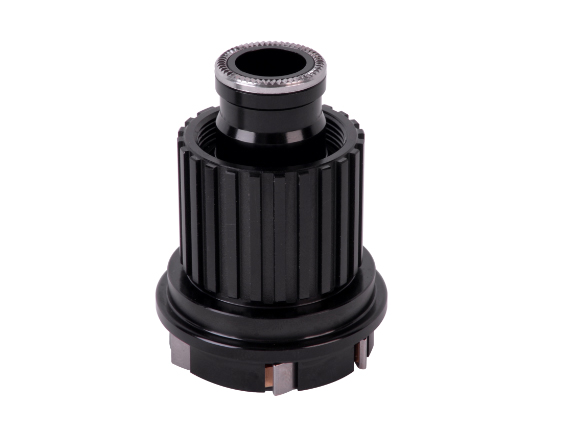
Replacing a freehub might seem daunting, but with the right tools and a bit of guidance, it’s a task any cyclist can handle. A well-functioning freehub ensures smooth shifting and efficient power transfer, making your rides more enjoyable. 1. Gather Your Tools Before you start, ensure you have the necessary tools: a cassette removal tool, chain whip, hex keys (typically 10mm), a rubber mallet, and grease. Additionally, you'll need your new freehub, like the Trifox Freehub Body. 2. Remove the Rear Wheel First, shift your chain onto the smallest cog to ease wheel removal. Release the quick-release lever or loosen the axle nuts, then carefully remove the rear wheel from the bike frame. 3. Remove the Cassette Secure the cassette using the chain whip to prevent it from rotating. Insert the cassette removal tool into the lockring and turn it counterclockwise to loosen and remove the lockring. Carefully slide off the cassette cogs and spacers, keeping them in order for reassembly. 4. Remove the Old Freehub With the cassette removed, locate the bolt that secures the freehub to the hub shell, typically accessible through the center of the hub. Insert the hex key or appropriate tool and turn counterclockwise to unscrew the bolt. Once loosened, gently tap the freehub with a rubber mallet if needed and slide it off the hub shell. 5. Prepare the Hub Shell Clean the hub shell thoroughly to remove any dirt or debris. Apply a thin layer of grease to the interface where the new freehub will sit. This prevents corrosion and ensures a smooth installation. 6. Install the New Freehub Align the new Trifox freehub with the hub shell and slide it into place. Secure it by tightening the fixing bolt clockwise using the hex key. Ensure it's snug, but avoid over-tightening as it can damage the freehub or hub shell. 7. Reinstall the Cassette Slide the cassette cogs and spacers back onto the freehub body in the correct order. Tighten the lockring clockwise using the cassette removal tool until secure. 8. Reinstall the Rear Wheel Place the rear wheel back into the bike frame. Tighten the quick-release lever or axle nuts securely. Check that the wheel is properly aligned and spins freely without rubbing against the brake pads or frame. 9. Final Check Shift through all the gears to ensure smooth operation. Listen for any unusual noises and check that the freehub engages and disengages properly. If everything feels smooth, your replacement is successful. Replacing a freehub, such as the Trifox Freehub Body, is a straightforward process that can significantly enhance your bike's performance. With a few tools and some careful steps, you can ensure your bike is running smoothly and efficiently, ready for your next adventure. Happy riding!
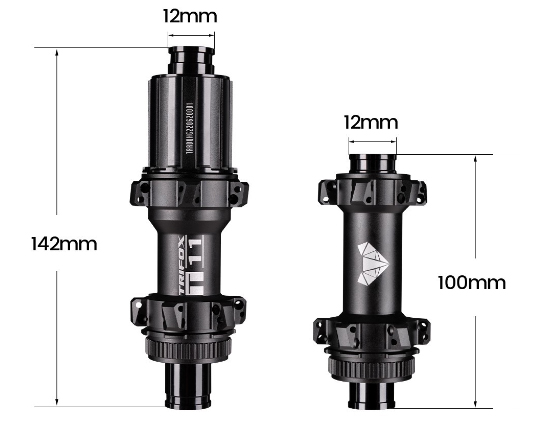
Choosing the right road hub for your bicycle is crucial for achieving optimal performance and enhancing your riding experience. A well-selected and maintained hub can significantly impact your bike's efficiency, speed, and reliability. Here’s a comprehensive guide on how to select and maintain the perfect road hub. 1. Understanding Road Hubs A road hub is the central part of a bicycle wheel that connects the wheel to the bike frame and allows it to rotate freely. It consists of several components, including bearings, axle, and hub shell. When selecting a road hub, you’ll want to consider factors like material, weight, and type of bearings. 2. Selecting the Right Road Hub Material Road hubs are typically made from aluminum or carbon fiber. Carbon fiber hubs, like those offered by Trifox, are lightweight yet strong, providing excellent stiffness and reduced weight. Bearings Hubs can come with either sealed cartridge bearings or loose ball bearings. Sealed bearings are low maintenance and offer better protection against dirt and moisture, making them ideal for road cycling. Compatibility Ensure the hub is compatible with your bike’s wheel size and cassette type. The Trifox hubs are designed to fit various wheel sizes and are compatible with multiple drivetrain systems, ensuring a versatile fit for most road bikes. Weight For competitive cycling, every gram counts. Choose a lightweight hub to reduce the overall weight of your bike, improving acceleration and climbing efficiency. 3. Maintaining Your Road Hub Regular Cleaning Keep your hub clean by wiping it down after rides, especially in muddy or wet conditions. Use a soft cloth and mild detergent to remove dirt and grime. Lubrication Regularly lubricate the bearings to keep them running smoothly. Avoid over-lubrication as it can attract dirt and cause wear. High-quality hubs like those from Trifox come pre-lubricated, but periodic maintenance will extend their lifespan. Inspection Periodically inspect your hub for signs of wear or damage. Check for any play in the bearings, unusual noises, or rough rotation. If you notice any issues, address them promptly to prevent further damage. Bearing Replacement Over time, bearings may wear out and need replacement. Follow the manufacturer’s guidelines for replacing bearings. Trifox hubs are designed for easy servicing, making bearing replacement straightforward. Torque Settings Ensure bolts and axle nuts are torqued to the manufacturer’s specifications. Over-tightening can damage components, while under-tightening can lead to instability. In conclusion, selecting and maintaining the right road hub involves understanding key components, considering compatibility, and performing regular maintenance. By choosing high-quality hubs like those from Trifox and following these maintenance tips, you’ll enjoy optimal performance and a smoother, more reliable ride. Invest in the right road hub today and experience the difference it makes in your cycling journey.
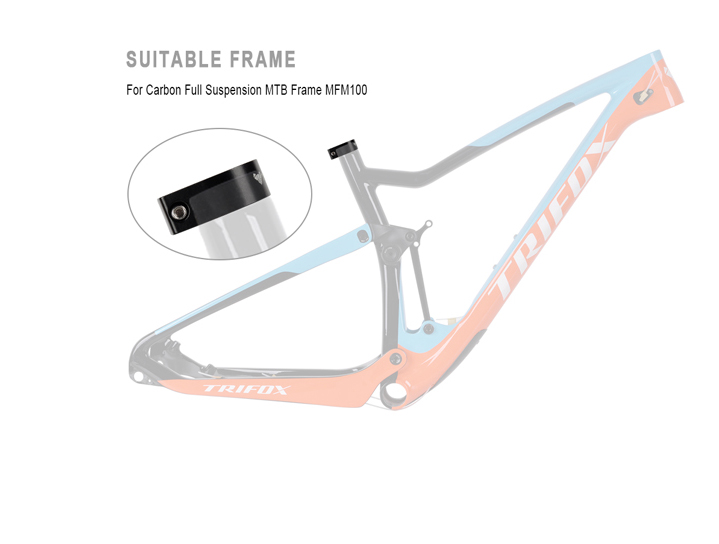
Installing an alloy seat clamp on your bicycle might seem like a small task, but it’s one that plays a crucial role in ensuring a secure and comfortable ride. A properly installed seat clamp keeps your seat post stable, preventing slippage and enhancing your overall cycling experience. Here’s a step-by-step guide to help you install your new alloy seat clamp correctly. 1. Gather Your Tools Before starting, make sure you have the necessary tools: an Allen wrench (typically 4mm or 5mm), grease, and a torque wrench if possible. You’ll also need your new alloy seat clamp, like the Trifox SC35, which is designed for durability and ease of use. 2. Remove the Old Seat Clamp If you already have a seat clamp installed, start by loosening the bolt using the Allen wrench. Unscrew it completely and carefully remove the old clamp from the frame. Keep the bolt and any washers in a safe place as you may need them later. 3. Clean the Seat Tube With the old clamp removed, clean the top of the seat tube where the new clamp will sit. Use a cloth to wipe away any dirt, grease, or debris. A clean surface ensures better grip and performance of the new clamp. 4. Apply Grease Apply a small amount of grease around the inside of the new alloy seat clamp. This helps in smooth adjustment and prevents corrosion. Avoid over-greasing as it can attract dirt. 5. Install the New Clamp Place the new Trifox SC35 seat clamp over the seat tube. Align it properly so that the bolt hole is positioned correctly. Insert the bolt through the clamp and begin to tighten it by hand. Make sure it's fitted evenly around the tube. 6. Adjust the Seat Post Insert your seat post into the seat tube. Adjust it to your desired height. Ensure the saddle is level and the height aligns with your comfort and riding style. 7. Tighten the Clamp Using the Allen wrench, tighten the bolt on the seat clamp. Use a torque wrench to achieve the recommended torque setting, usually marked on the clamp or provided by the manufacturer. Over-tightening can damage the clamp or frame, while under-tightening can cause slippage. 8. Check for Stability Once the clamp is tightened, check the stability of the seat post. Try to move the seat side to side and up and down. If there’s no movement, your installation is successful. 9. Final Adjustments Take a short test ride to ensure everything feels right. Make any minor adjustments to the seat height or angle as needed, and re-tighten the clamp if necessary. Installing an alloy seat clamp, such as the Trifox SC35, is a straightforward process that can greatly enhance your bike’s performance and comfort. With proper installation, you'll ensure a stable and enjoyable ride every time you hit the road.
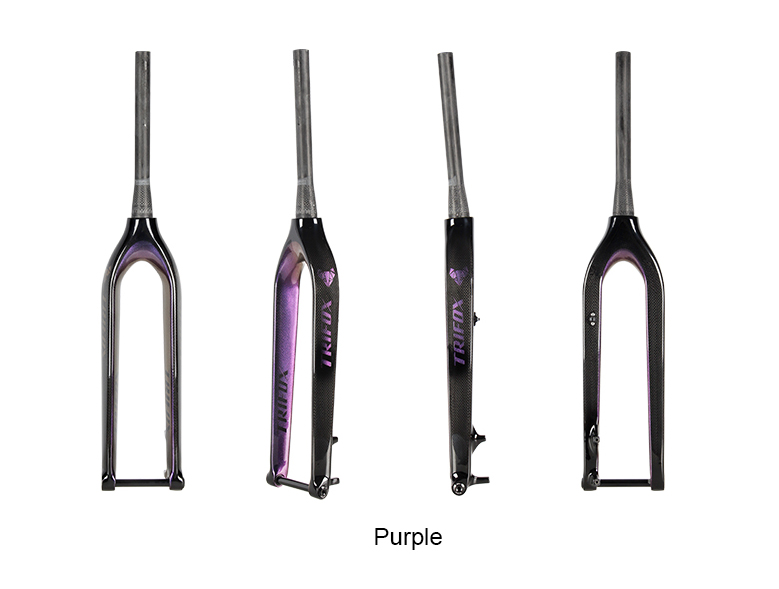
Choosing the right rigid MTB fork can make a significant difference in your mountain biking experience. Whether you're an avid off-road adventurer or a casual trail rider, selecting a fork that complements your riding style and bike setup is crucial. Here's a guide to help you make the perfect choice. 1. Understand Your Riding Style Before diving into specifications, consider how and where you ride. If you enjoy technical trails with lots of obstacles, you'll need a fork that offers excellent strength and durability. For smoother paths and long-distance rides, a lightweight fork with good responsiveness might be more suitable. 2. Material Matters One of the primary factors to consider is the fork's material. Carbon fiber forks, like the Trifox TMK100, offer an excellent balance of strength and weight. The TMK100 provides exceptional durability while keeping the weight low, enhancing both performance and handling. 3. Compatibility and Fit Ensure that the fork is compatible with your bike frame and wheel size. The Trifox TMK100 is designed specifically for 29-inch wheels and features a tapered design from 1-1/8 to 1-1/2 inches, which ensures a snug fit and optimal handling1. Additionally, it is suitable for straight headtubes, making it a versatile option for various mountain bike frames. 4. Brake Compatibility Having reliable stopping power is essential for mountain biking. The TMK100 is compatible with disc brakes, which provide consistent performance in all weather conditions1. This feature is particularly important for off-road cycling, where you may encounter varying terrains and weather scenarios. 5. Axle Type and Tire Clearance Check the axle type and tire clearance of the fork. The TMK100 utilizes a thru-axle style, offering increased stiffness and better alignment. It can handle tires up to 2.1 inches, giving you the flexibility to choose wider tires for better traction on rugged trails. 6. Aesthetics and Design Last but not least, consider the aesthetics and design of the fork. A sleek and modern fork can enhance the overall look of your bike. Reviews have praised the TMK100 for its stylish appearance, which adds an attractive touch to any mountain bike. In conclusion, choosing the perfect rigid MTB fork involves considering your riding style, ensuring compatibility, and paying attention to key features like material, brake compatibility, axle type, and design. The Trifox TMK100 stands out as an excellent option, combining lightweight carbon construction with robust performance features. For more details, check it out here.

When it comes to enhancing your cycling experience, handlebars play a crucial role. If you're contemplating whether to switch to a flat bar, here are some compelling reasons why it might be the right choice for you. 1. Enhanced Control Flat bars offer superior control, especially in technical terrains. The wider grip allows for better leverage, making it easier to navigate sharp turns, rough trails, and obstacles. This increased control is particularly beneficial for mountain bikers and commuters who face varying conditions daily. 2. Improved Comfort A flat bar promotes a more upright riding posture, which can significantly reduce strain on your back, neck, and wrists. This ergonomic advantage makes long rides more comfortable, allowing you to enjoy your journey without discomfort. 3. Versatility Flat bars are versatile and suitable for various types of riding, from urban commuting to cross-country adventures. Their straightforward design makes mounting accessories like lights, GPS units, and phone holders easier, enhancing your overall riding experience. 4. Durability and Safety Flat bars are typically more robust than their drop-bar counterparts, providing increased durability. Their design also offers better stability and control, contributing to a safer ride, especially when navigating uneven or unpredictable surfaces. Top Pick: Trifox Carbon Flat Bar If you're looking for a high-quality flat bar, check out the Trifox Carbon Flat Bar FHB100. Known for its lightweight yet sturdy construction, this flat bar enhances both control and comfort, making it a great upgrade for your bike. Conclusion Switching to a flat bar can provide better control, improved comfort, and greater versatility, making it a worthwhile consideration for various types of cyclists. Whether you're tackling off-road trails or navigating city streets, the benefits of a flat bar are clear. Upgrade to a flat bar and experience the difference it can make in your riding experience.
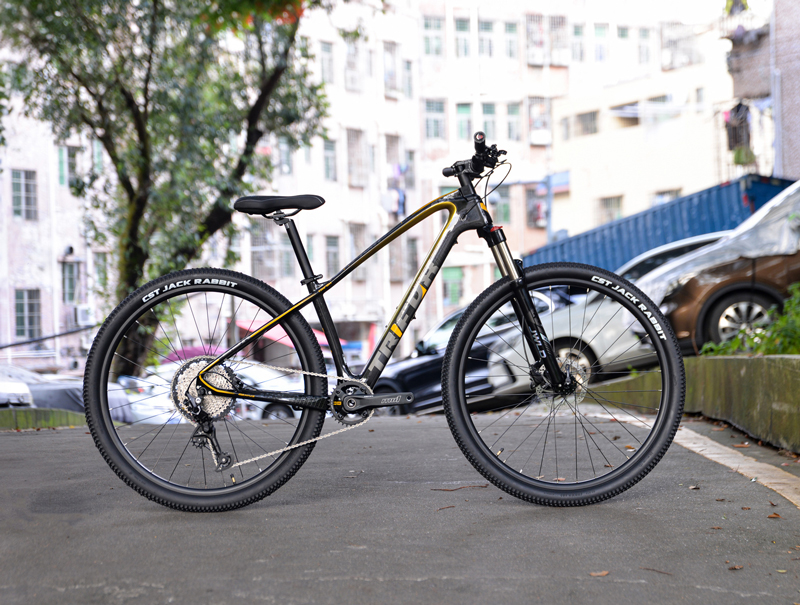
Building a bike with a high-quality hardtail frame can be an incredibly rewarding project, offering customization and performance tailored to your specific needs. Here's a step-by-step guide to help you get started. 1. Choose the Right Frame Start with a reliable and high-quality frame like the Trifox Carbon MTB Hardtail Frame MFM200. Known for its lightweight construction and durability, this frame provides an excellent foundation for your build. 2. Gather Essential Components Next, you'll need to gather all essential components: Fork: Choose a suspension fork that matches your riding style. Groupset: A high-quality groupset ensures smooth shifting and efficient power transfer. Wheels and Tires: Select wheels that are strong yet light, along with tires suited for your terrain. Brakes: Reliable disc brakes offer superior stopping power. 3. Assemble the Drivetrain Install the bottom bracket and crankset first, followed by the chain and derailleur. Ensure everything is aligned correctly for optimal performance. 4. Install the Fork and Handlebars Slide the fork into the head tube and secure it with the stem. Attach the handlebars, making sure they are at a comfortable height and angle. 5. Add the Wheels and Brakes Mount the wheels onto the frame and install the disc brakes. Make sure the brakes are properly aligned to avoid any rubbing against the rotors. 6. Final Adjustments Adjust the saddle height, handlebar position, and brake lever reach to fit your body perfectly. Tighten all bolts securely and check for any loose parts. 7. Test Ride Before hitting the trails, take your new bike for a test ride. Ensure everything functions smoothly and make any necessary tweaks. Conclusion Building a bike with a high-quality hardtail frame like the Trifox Carbon MTB Hardtail Frame MFM200 is a fulfilling endeavor that results in a personalized, high-performance ride. Follow these steps for a successful build and enjoy the unmatched satisfaction of riding a bike you've built yourself. Happy trails!

















